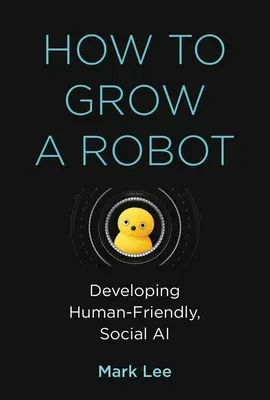How to develop robots that will be more like humans and less like
computers, more social than machine-like, and more playful and less
programmed.
Most robots are not very friendly. They vacuum the rug, mow the lawn,
dispose of bombs, even perform surgery--but they aren't good
conversationalists. It's difficult to make eye contact. If the future
promises more human-robot collaboration in both work and play, wouldn't
it be better if the robots were less mechanical and more social? In How
to Grow a Robot, Mark Lee explores how robots can be more human-like,
friendly, and engaging.
Developments in artificial intelligence--notably Deep Learning--are
widely seen as the foundation on which our robot future will be built.
These advances have already brought us self-driving cars and chess
match-winning algorithms. But, Lee writes, we need robots that are
perceptive, animated, and responsive--more like humans and less like
computers, more social than machine-like, and more playful and less
programmed. The way to achieve this, he argues, is to "grow" a robot so
that it learns from experience--just as infants do.
After describing "what's wrong with artificial intelligence" (one key
shortcoming: it's not embodied), Lee presents a different approach to
building human-like robots: developmental robotics, inspired by
developmental psychology and its accounts of early infant behavior. He
describes his own experiments with the iCub humanoid robot and its
development from newborn helplessness to ability levels equal to a
nine-month-old, explaining how the iCub learns from its own experiences.
AI robots are designed to know humans as objects; developmental robots
will learn empathy. Developmental robots, with an internal model of
"self," will be better interactive partners with humans. That is the
kind of future technology we should work toward.

